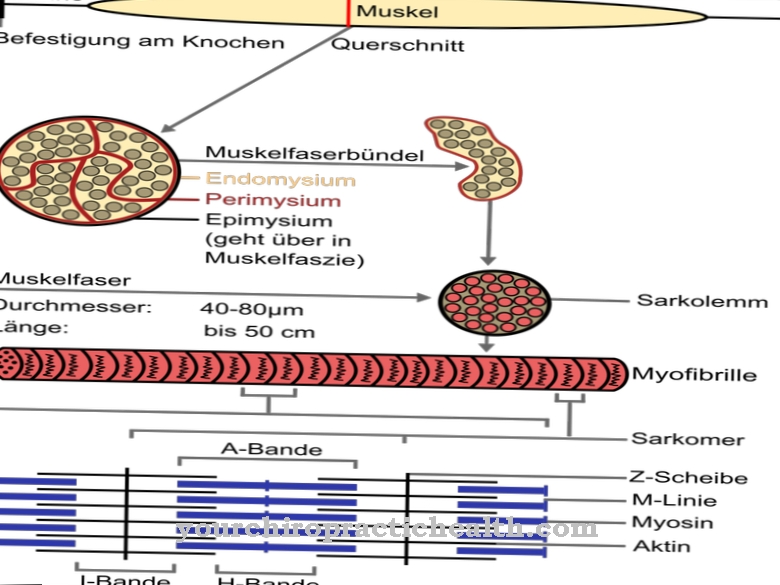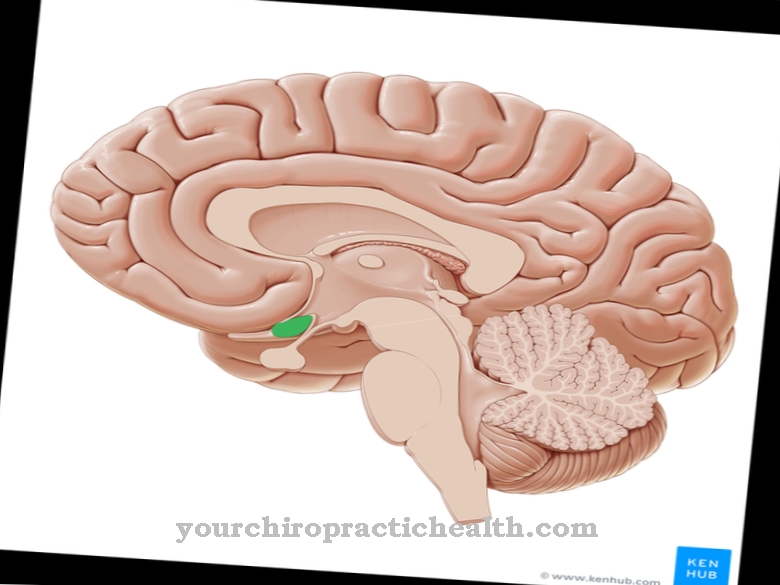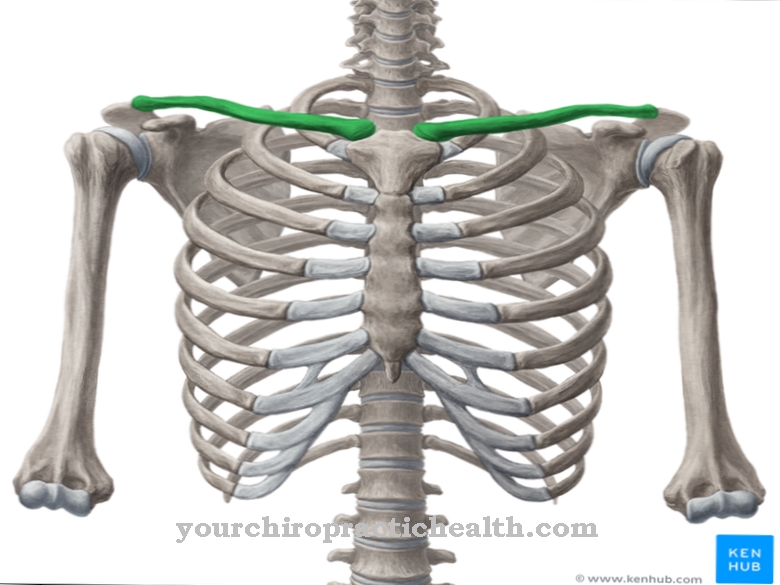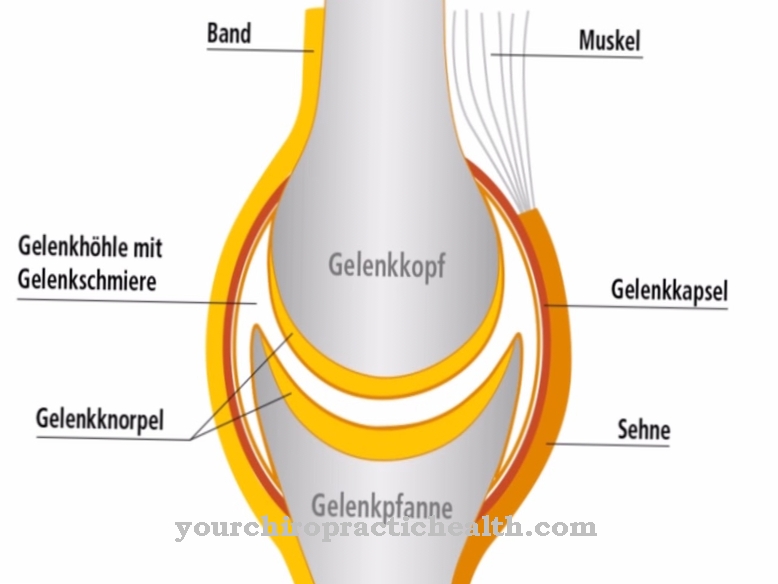The Oral cavity is a defined anatomical section of the head. The insides of the lips and cheeks are just as important as the gums, teeth, front roof of the mouth, floor of the mouth and tongue. The entire oral cavity is lined with mucous membrane, consisting of so-called multi-layered, non-cornifying squamous epithelium.
What is the oral cavity?
The Oral cavity is defined as the first section of the human digestive tract. As part of the mouth, the oral cavity contains the relevant organs, tongue and teeth, which are responsible for breaking up the food ingested.
Histologically, the mucosal epithelium of the oral cavity consists of Merkel cells, Langerhans cells and melanocytes, as they also occur in the skin. Under the epithelium of the oral cavity there is a layer of tissue, Lamina propria, which is toothed like a papilla with the epithelium. In addition, the lamina propria has adhesions to the periosteum of the palate.The oral cavity is an opening in the body for ingestion of food, the tongue and teeth are responsible for the initial shaping and crushing of the food components supplied. The so-called food bolus is created through shaping, mixing and crushing. Digestive enzymes and thick secretions from the salivary glands are added to this chyme in the oral cavity.
The salivary glands release their digestive juices directly into the oral cavity through tiny ducts. The oral cavity is also involved in the processes of facial expression, breathing and voice formation. The entire mouth is not a sterile part of the body, but is populated by a multitude of germs and microorganisms.
The entirety of all germs in the oral cavity is also referred to as oral flora. Most of them are harmless saprophytes. The oral flora can, however, harbor optional or obligatory pathogenic germs which, however, are not dangerous for the wearer if the immune system is intact.
If there is a shift in the physiological balance in the oral cavity, pathogenic germs can quickly gain the upper hand and trigger various diseases, including caries, canker sores or inflammation of the oral mucosa.
Anatomy & structure
The oral cavity can be anatomically divided into 3 sections, the oral vestibule, the main oral cavity and the throat narrowing.
The oral vestibule, Vestibule oris, is the area between cheeks and teeth. The main mouth cavity, Cavum oris proprium, is bounded laterally and in front by the so-called alveolar processes and the teeth they contain. As a meander Isthmus faucium, the transition from the oral cavity to the throat area is called. The tongue is attached to the floor of the mouth and takes up most of the main oral cavity. In the floor of the mouth are the sublingual salivary glands, Sublingual gland. The rows of teeth in both jaws protrude far into the oral cavity from the alveolar processes and surround the tongue in a horseshoe shape.The multi-layered uncornified squamous epithelium of the oral cavity has a high regenerative capacity. Defects caused by inflammation or injuries can be remedied within 4 to 10 days without consequences. The high mitotic rate of the oral mucosa also makes it susceptible to cell proliferation and even the development of malignant tumors.
Function & tasks
The oral cavity takes on a variety of functions; as the beginning of the digestive tract, the oral cavity is also known as the head intestine. Strictly speaking, digestion begins immediately after the intake of food in the mouth. Teeth hold on to a bite and grind and grind.
The oral mucosa contains proprioceptors and sensors that are used to test food, regardless of whether it is supplied in solid or liquid form. Due to their sensitive sensitivity, these receptors are able to check the temperature and consistency of food components at lightning speed.
Taste buds are located on the epiglottis and in the throat, but especially many of them are on the surface of the tongue. These receptors can roughly categorize the four flavors: sweet, sour, salty and bitter. Bitter receptors are mainly located on the back of the tongue just before the throat entrance.
In close connection with the sense of smell, the taste buds develop the human sense of taste. Language and sound formation are also important functions of the oral cavity. Outwardly, the oral cavity also serves to communicate with the environment through the facial muscles.
Illnesses & ailments
Inflammation of the oral mucosa, which can be triggered by an imbalance in the bacterial flora, is one of the most common symptoms of the oral cavity with corresponding functional restrictions.
Poor oral hygiene or incorrect mechanical loads, for example from poorly fitting prostheses, can promote inflammation of the gums or the oral mucosa.
Inflammation, for example in the form of painful canker sores of the oral cavity, can be noticeable through pain and reddening of the oral mucosa and tongue, blisters or whitish coatings, ulcer formation and abscesses or burning, increased salivation and bad breath. Oral diseases, such as a harelip, can also be congenital.
From a certain extent, such congenital defects can be corrected surgically. Malignant neoplasms in the area of the oral cavity are still feared today, as they hardly cause any discomfort at the beginning. If patients visit dental practices or ENT doctors because of whitish, painless changes in the mucous membrane, then in a large number of cases the tumor stages are already well advanced.
The most common malignant tumor of the oral cavity is tongue cancer and cancer of the sublingual gland, also known as cancer of the floor of the mouth. Early detection can only be made through consistent specialist medical assessment of the entire mouth and throat area as part of preventive examinations. Alcohol and nicotine use can significantly increase the risk of any type of oral cancer.



























